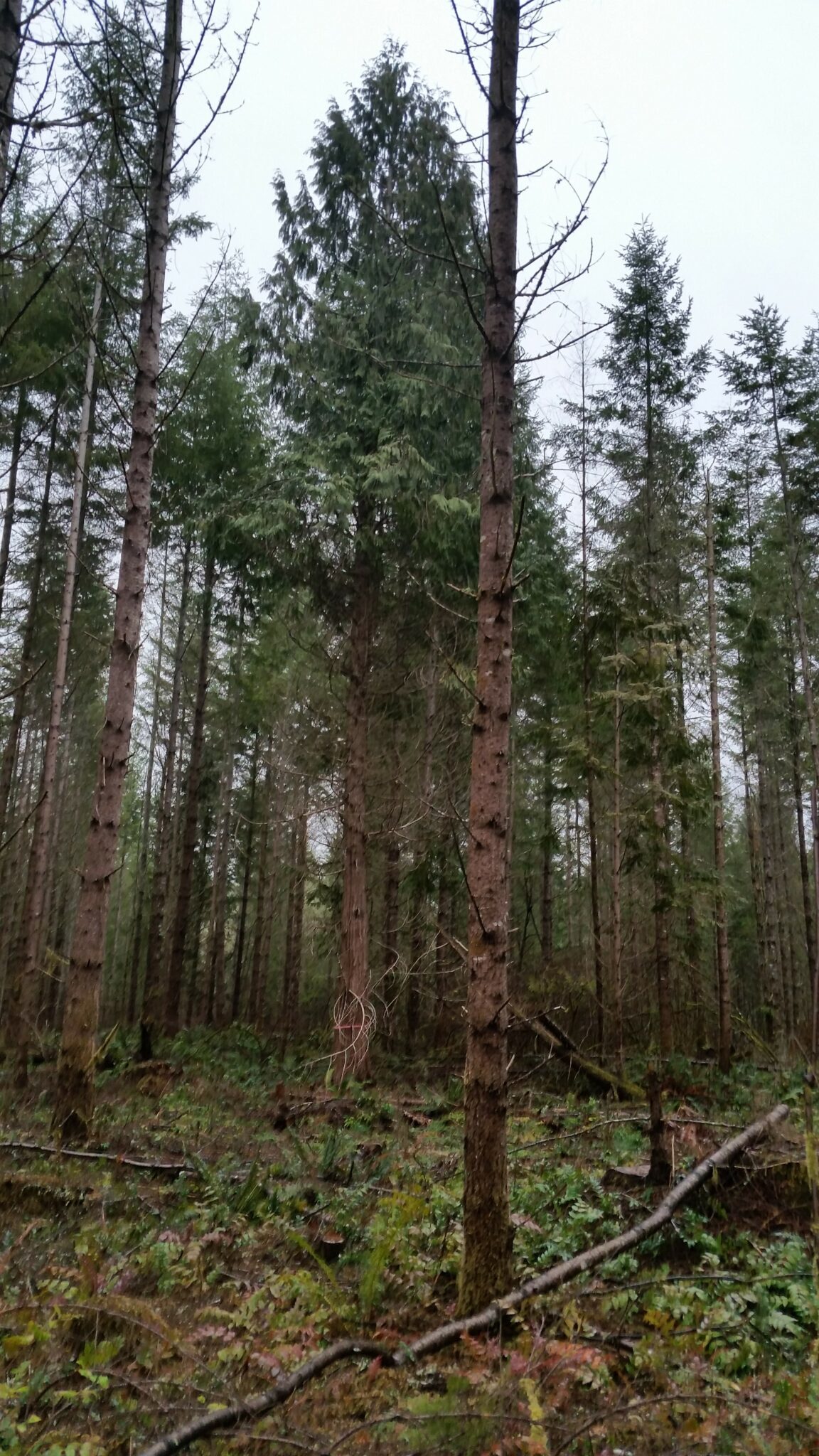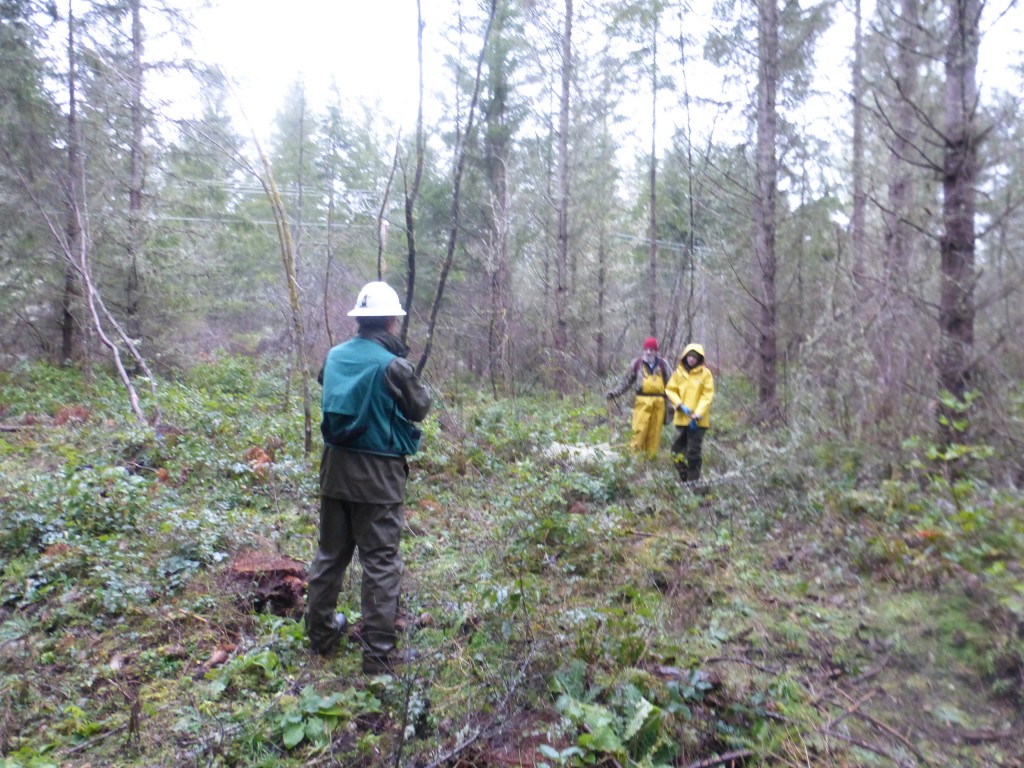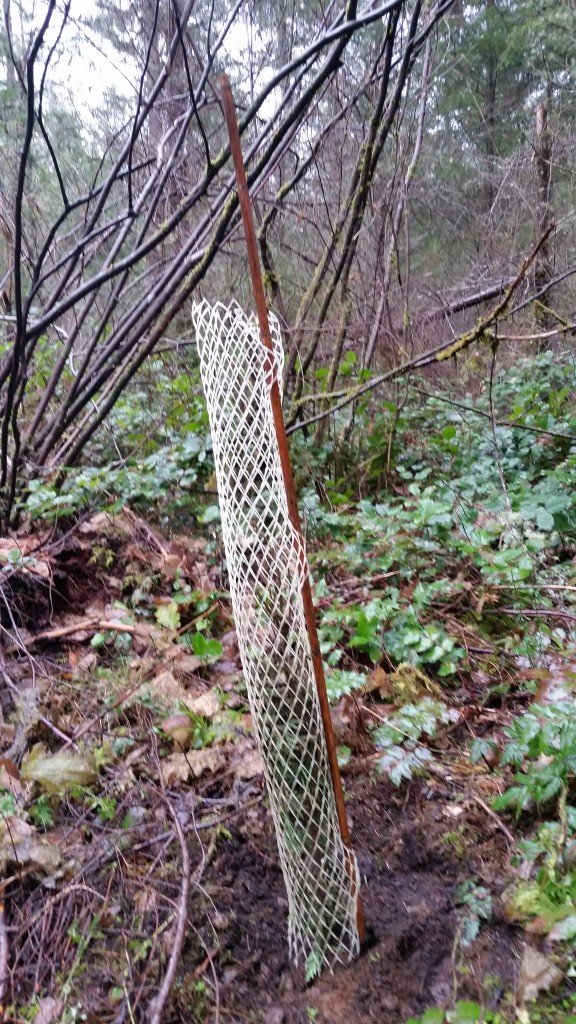Member Spotlight: Nisqually State Park

To restore ecological complexity to a forest, you need good partners and often, you need to cut a few trees.
Last summer, Washington State Parks & Recreation Commission worked with the University of Washington’s Pack Forest, WA State Department of Natural Resources, and WyEast Timber Services to conduct an ecologically-based harvest project on 104 acres of Nisqually State Park. State Parks’ goal for the project was to improve forest health by enhancing the biodiversity of the forest.
The restoration treatment used a silvicultural method known as a variable density thinning (VDT) and created half-acre to 1-acre gaps where all the Douglas-fir were removed, half-acre to 1-acre skips where all the trees were retained, and selectively thinned trees from the rest of the stand. The harvest removed trees succumbing to root rot, small diameter trees, and retained the largest Douglas-firs, and nearly all of the stand’s existing western red cedar, bigleaf maple, and other hardwoods.
The park is Forest Stewardship Council® (FSC®) certified through NNRG’s group certificate. NNRG recently conducted a field assessment to review the harvest areas. At each site NNRG observed exemplary harvest practices that minimized both soil disturbance and damage to the trees. NNRG found the harvest to be consistent with the long-term objectives of State Parks’ forest management plan.
State Parks met or exceeded the high standards of the FSC, and in so doing provides an instructive example of both long-term economically viable and environmentally sustainable forest management practices.

The 1,300-acre forest is 7 miles west of Eatonville on State Route 7, at the confluence of the Nisqually River, Mashel River and Ohop Creek. It includes a diverse landscape of steep-sided forest valleys, high ridges and reforested plateaus in the Mount Rainier foothills. Currently the park consists largely of former-industrial plantation lands with a monoculture of Douglas-fir trees. By removing the less robust Douglas-fir there are now more resources for the healthiest trees to grow bigger and more space to plant a mix of other native trees that one typically finds in our lowland Puget Sound forests.
State Parks is now working with the Washington Conservation Corps to interplant the forest with more cedar, lodgepole pine, and western white pine. The crew is also monitoring the forest for invasive species and using manual methods to remove them, particularly Scots broom and bull thistle. It’ll take a few years of maintenance, but the forest is on a faster track to grow larger trees and complex wildlife habitat.

In 2014, State Parks began a partnership agreement with the Nisqually Indian Tribe to implement the park plan for developing hiking and equestrian trails and an educational center. In the years to come, the park will include an array of trails from barrier-free access to mountain bike challenge courses, picnic areas, and camping. Stop by the forest on your next trip to Mt. Rainier to look at the fantastic work.

Leave a Reply